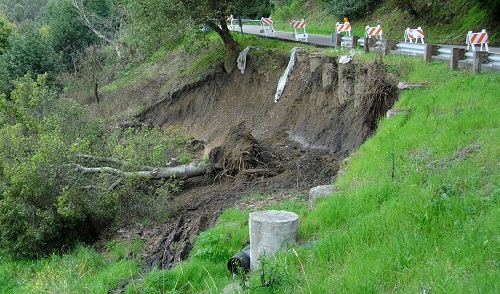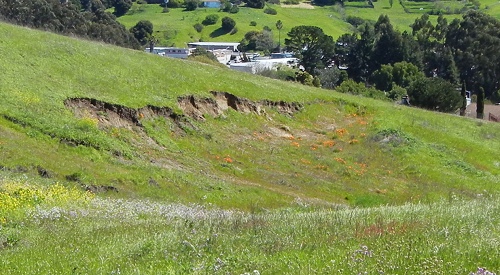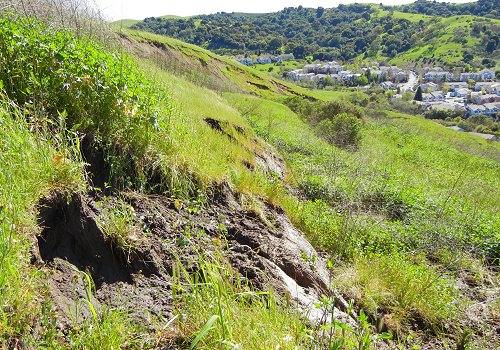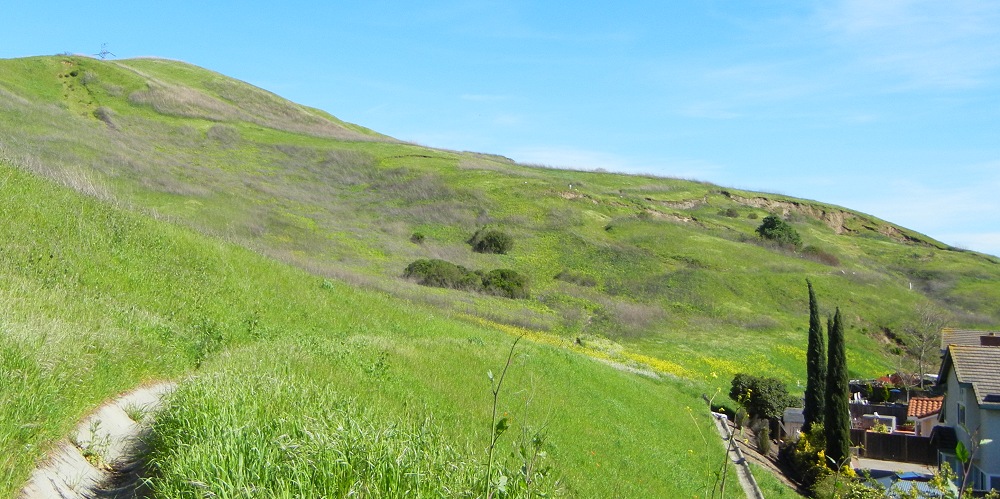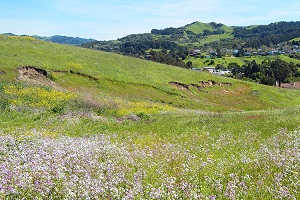
Landslides are widespread in the Bay Area by the end of wet winters like this year’s rainy season. They range from minor disturbances like these to large, ancient movements that awaken in the wettest years. All photos by Andrew Alden.
Every rainy season this happens: Bay Area homes are threatened by ground movement. While each landslide that damages someone’s home is a tragedy, as a general phenomenon landslides are interesting. So first let me commiserate with landslide victims; I’ve suffered land displacement in my home too. It’s no fun dealing with the upheaval, the neighbors look askance and worry about their own situations, and things are even worse when lawyers and the news media get involved.
And now I’d like to show you some landslides and help you recognize their signs and symptoms. Landslides can result from human misjudgement, but they also occur on their own, quite naturally. It’s usually hard to tell the difference or assign blame. The state licenses geologists to ensure that the right expertise is available. In any case, I am keeping the locations anonymous.
Landslides happen when gravity overcomes the natural cohesion of a slope—the slope becomes too steep, the material becomes weak, or (usually) a combination of both. In the Bay Area, streams dig downward, earthquakes push the hills upward, and they reach an uneasy balance. At that point landslides are inevitable, and we can talk about the specific changes that cause them, natural and artificial. Natural ones include changes in long-term climate and short-term weather. Artificial ones include oversteepening slopes by excavation and land-use changes that alter the groundwater.

